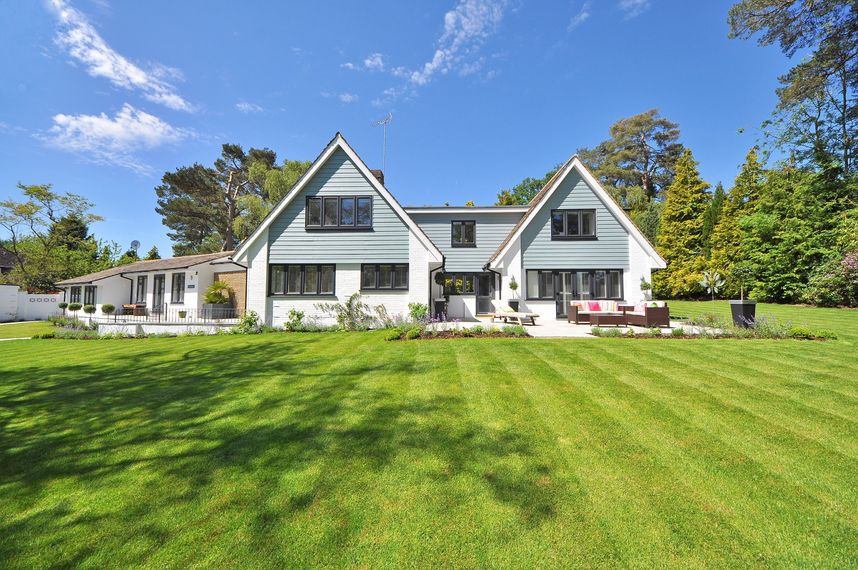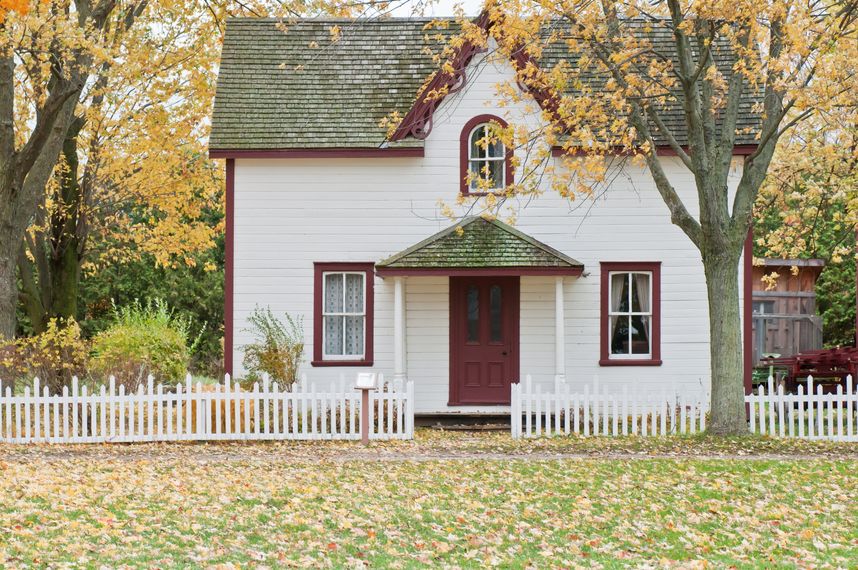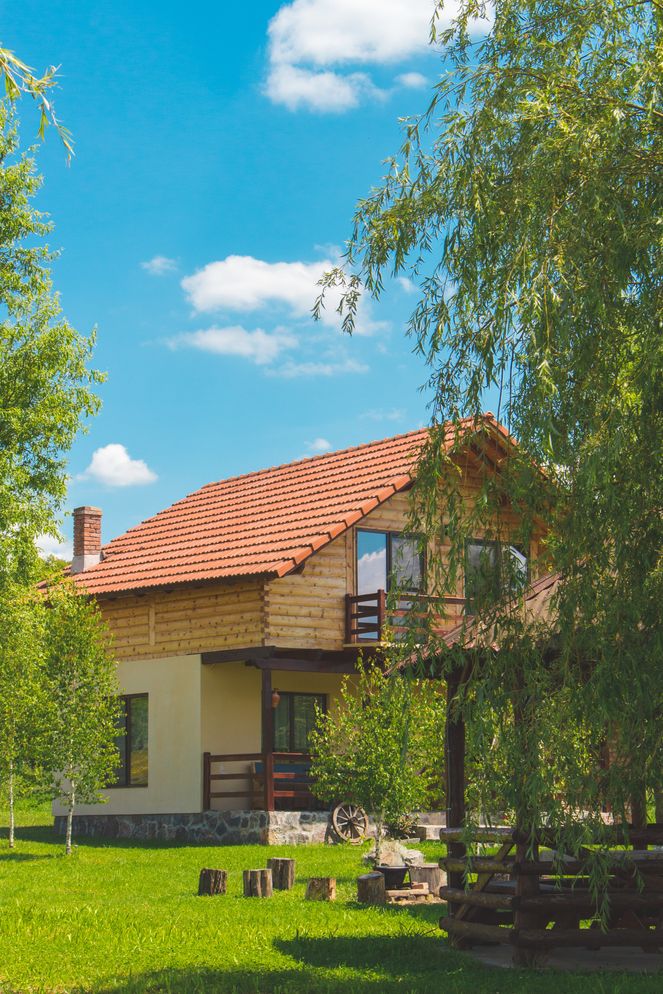Your home’s siding. It’s a barrier that protects the structure of your home through heat and cold, snow and rain, wind and storm. It’s an element that completes the aesthetics of your home and enhances your curb appeal. No matter which way you look at it, your home’s siding is one of the most significant aspects of your home and contributes to the comfort, pride and happiness of your family. As with every element about your home, siding too is prone to damage and wear and tear, and would require you to make a choice between maintenance, repairs or replacement.

Here’s a detailed blog that’ll bring every possible thing that you need to know about siding, at your fingertips. At Hynes, we believe the more you know about the elements of your home, the better you’ll get at choosing, installing, maintaining and experiencing the maximum possible performance from them. Read on.
Types of Siding
As with everything else in the world, you’ll find no dearth of choices when you go looking for siding. Good looks, superior features, enduring quality, today’s siding options come with all these features and more. Read through this section to understand the advantages and disadvantages associated with some of the most popular sidings in the market today.
1. Vinyl Siding: This is one of the most common types of siding preferred by homeowners today. Because it’s durable, it gives you longstanding value for your investment. Because it’s affordable, it gives you the freedom to give your home the right roofing without procrastination and you will also find vinyl siding services easily.
The Pros:
-Available in a range of colors and styles
-Requires little or no maintenance
-Doesn’t need repainting
-Vinyl is typically covered by a 30 to 40 year warranty
-Mimics the look of real wood
-Light-weight and easy to install
-Can be directly installed over existing materials
The Cons:
-Can warp in extreme weather conditions
-Color choice is permanent as vinyl cannot be repainted
-Impacts can cause dents or cracks
2. Wood Siding: The timeless charm of wood makes this siding a perfect choice for homes or decors that desire class without compromise. Unlike synthetic materials, the endurance or lifespan of wood siding will depend on factors like the weather – the amount of rainfall or snow as well as the severity of sun and wind. Wood Siding comes in a wide range of variants some of which include Wood Fiber Cement Siding, Cedar Siding, Redwood Siding, Pine Siding and Engineered Wood Siding.
The Pros:
-Can be stained and painted to yield wide-ranging colors
-More energy-efficient than other non-insulated siding
-Easy to install and repair
-Most Green Siding among all other materials
The Cons:
-Requires long-term maintenance
-Expensive to maintain
-Vulnerable to insect attacks
-Susceptible to fires
3. Fiber Cement Siding: Made from a mixture of wood pulp, cement, clay and sand, fiber cement siding is recognized for its great looks and surprising longevity. The wide array of styles and shapes make this siding option versatile enough to match a wide variety of homes.
The Pros:
-Resists expansion and contraction with temperature changes
-Fire-resistant with Class 1A fire rating
-Resistant to salty air of coastal areas and also not prone to rot or decay
-Easy to clean
-Choice of paint in unlimited colors
The Cons:
-Heavy in weight and requires specialized installation techniques
-More expensive than other sidings like vinyl
-Needs periodic repainting
-Challenge to find contractors with relevant installation expertise and resources
4. Metal Siding: A contemporary appearance is what makes metal siding a familiar sight among rooftops in America. Available in aluminum and steel varieties, metal sidings offer advantages like resistance to corrosion and fire among other things.
The Pros:
-High-end choice that’s durable and resistant
-Low maintenance even in tough weather conditions
-Eco-friendly product as it can be recycled
-Resistant to fire and insects
-No color fading over time
The Cons:
-Expensive to buy and install
-Prone to dents
-Top layer scratches can lead to rust formation if not resealed
-Needs special paint which is more expensive than painting wood or fiber cement
5. Brick Siding: This choice of siding is found in homes that desire a charming colonial or vintage exterior, even in a fast evolving world. Also known as brick veneer, brick siding comprises a brick wall that’s installed on a home’s exterior wood frame. However, brick veneer is not just lighter but also thinner than solid brick walls, which delivers a few solid advantages to homeowners as well as installers.
The Pros:
-Low maintenance and good longevity
-Variety of colors
-Withstands heat and fire; also offers insulation from sound
-No need of paint or other upkeep measures
The Cons:
-Difficult to repair
-Exposure to moisture or water can cause fading and structural deterioration
-In case of damage to even individual bricks, entire wall will need removal
6. Stucco Siding: A blend of Portland cement, lime, sand and water, Stucco is a thin finish coat that completes the exterior appearance and structure of residential or commercial structures. A predominant trait of Spanish and Mediterranean structures, Stucco Siding is now a popular choice and pleasing sight in neighborhoods across the US.
The Pros:
-Can be applied on any surface
-Resistant to fire and pests
-Flexible in terms of colors, textures and shapes
-Can last up to 50 years with proper maintenance
-Easy to clean and maintain
-Insulates the home from heat and sound
The Cons:
–Stucco reapplication in damaged areas is time-consuming and expensive
-Requires professional grade contractors with experience in handling stucco
-Can easily develop hairline cracks in earthquake-prone areas
-Not recommended for areas with rainy environments
How to choose the right siding for your home
How do you choose the siding that makes the best sense for your home from the choices out there? Rather than rely on impulse or hearsay, choose to take a decision that’s based on facts.
#Fact 1 – Home Style: Let the style you desire for your home guide you. If you’re looking to create a classic and timeless appeal, wood and even brick siding would make good choices. If you want a natural look that helps you blend in with your lush surroundings, choose stone. Stucco will delight you if the clean and charming Mediterranean architectural style is your goal. There’s a huge variety of sidings out there, each having its own unique appeal and each meant to match a home perfectly. You just have to discover the right one.
#Fact 2 – Color: Once you decide on the type of siding, the next decision you’re going to need to take is the color. With a wide palette of colors coming along with virtually every siding – you may get more shades, textures and shapes with some choices, things could get a bit overwhelming. Think about the overall result that you’re looking for. Do you desire an exterior that’s light, neutral, or dark maybe? How about vibrant, muted or bold? Well, no matter what look you have in mind, there’s a color out there to make it possible. An expert tip here would be to choose one primary color and two secondary colors for doors, trims, shutters and accents.
#Fact 3 – Budget: How much is a new siding installation going to cost you? The answer depends on a combination of things. The style, kind of material and the nature of technology involved. For example, vinyl siding is one of the most economical options in the market while cedar siding is the most expensive among wood sidings. Fiber cement siding is more expensive than vinyl but more affordable than stucco. It’s important to fix your budget before you go siding shopping. The good news here is, regardless of your choice, a new siding will increase the resale value of your home.
#Fact 4 – Ease of Maintenance: When making an investment in a new siding, you’re definitely looking for two things. One, something that makes your home look good and two, something that reduces your hassle of maintenance. Here, not all sidings score the same. Vinyl siding for example, is popular for its durability and easy upkeep. Wood siding, though a high-end option with a distinctive appeal, would require periodic repainting to cover up the damage caused by constant sun exposure.
#Fact 5 – Climate: The environment you’re in plays a significant role in determining the endurance of your siding. For instance, if you’re in a cold region, steel siding is a great pick because it won’t warp in freezing winters. If you’re in a region that sees the mercury rising during summers, fiber cement makes better sense. This material won’t melt or bend under extreme heat. Metal siding is good for places that face frequent rains, storms or even snowfall. Make sure you check for climate performance with each of the siding options in your consideration.

Benefits of replacing your Siding
1. Enhance your home’s exterior: The logic is the same as giving your interiors a new coat of paint, your floors a new layer of flooring material or your décor a new set of furniture. When you replace your old siding – which has probably faded, dented, cracked or chipped with exposure to the elements, you have the opportunity of renewing your home’s exterior with a completely different look and material. No matter what material you choose, the installation is going to drive up your curb appeal instantly.
2. Reduce your home’s energy consumption: With newer advancements in technology and materials, the siding variants available in the market today offer you an additional advantage. The ability to insulate your home against unwanted heat gain during summers and heat loss during winters. This will reduce the load on your HVAC system, bringing down your overall energy consumption and expenditure.
3. Ease your maintenance: Upgrading your home exterior with a new siding that’s better suited to adapt to your climate or environment, will considerably reduce your hassle of maintenance as well as the possibility of early replacement.
Steps involved in Siding Installation
Step 1: Preparing your home:
A home improvement activity like siding installation calls for some initial groundwork. This would include details like trimming the shrubbery that’s directly around your home, removing garden furniture, plants or any other objects that may hamper the contractor’s work process. It’s also a good idea to clear things that are located or placed directly behind the walls, within your home, to avoid any possibility of damage caused by the vibrations or shocks. Clear any vehicles that are parked beside your home to avoid damage by falling debris.
Step 2: Removing the old siding:
Once the prep work is done, your siding installation project will take its first big step forward. The removal of your old siding. This may create a temporary mess in the form of a pile of debris in your yard, but don’t worry. The contractor’s team will clear the pile at the time of completion of your project.
Step 3: Inspecting and preparing the wall:
It’s necessary to make sure your walls are free of any kind of damage or imperfections before cladding it with a new siding. This is to ensure your new siding doesn’t begin with a disadvantage and offers you the performance and aesthetics that it’s meant for, that made you choose it in the first place. Your contractor will therefore, thoroughly examine your exterior walls for cracks, leaks, rot or any other issue that needs removal or repair.
Step 4: Installing insulation:
No siding is complete without the layer of insulation underneath. So when your old siding is taken off, your old insulative layer is removed too. This ensures that the siding that’s to come in will be backed by a new insulation layer that suits its specifics and when combined, effectively gives your home both lasting protection and elegance.
Step 5: Installing the New Siding:
With the insulation in place, it’s time for the step that most home owners eagerly await. The installation of the new siding that they’ve decided upon after no doubt, considerable time, research and efforts. The process and time taken during this phase of the project will depend on the nature of the siding chosen. For instance, stucco installation calls for specialized techniques and labor. Fiber cement calls for tougher cutting tools as compared to wood or vinyl siding. Well, regardless of the time taken or tools and techniques involved, this phase sets the ground for your home’s new look.
Step 6: Cleanup:
The final step is to clean out the dust, mess and debris and hand you back your home exactly the way it was, before the start of the project. A professional contractor would not shake your hand and leave your home without completing this vital step.
How much does a Siding Installation cost?
The cost of a siding installation will depend on two factors. The type of the material and the size of the home. The following costs are based on the average size range between 1500 to 2500 square feet.
Vinyl Siding: Between $6150 – $15,900
Wood Siding: Between $7000 – $23,000
Engineered Wood Siding: Between $3000 – $5000
Aluminum Siding: Between $10,000 – $19,000
Fiber Cement Siding: Between $6000 – $20,000
Brick Siding: Between $10,000 – $75,000
Stone Veneer Siding: Approx. $105,000

Steps to follow to hire the right Siding Contractor
Step 1: Check the company: A good way to begin your search would be by checking out the credentials of the contractors you want to consider. Look for customer reviews as well as service or performance ratings on platforms such as Angie’s, HomeAdvisor, Yelp or more. Also look up the company website. Is it well-designed and informative? Does it cover details about the contractor’s background and projects? There’s a lot you’ll discover by simply scrolling down a page.
Step 2: Ask for referrals: It’s always better to know the standards of a contractor before beginning the job than after. Asking for referrals of jobs previously handled will help you do just that. While you’re at it, also try asking your friends, neighbors or associates if they’ve had a siding job done in the recent past and whether it was done on time, within budget and to the promised quality.
Step 3: Invite multiple bids: A siding installation is as much about quality as it is about cost. So make it a point to get bids from multiple contractors so that you know what the prevailing average cost is. This will save you from spending more than what you need to. A word of caution, don’t fall for bids that’re below the market price, as these are likely to be from contractors who’ll lure you in and deliver a shoddy job later.
Step 4: Ask for a portfolio with pictures: A contractor who’s an expert in his field will gladly want to showcase his previous projects with you, even before you ask for it. In any case, when you meet a contractor, do ask for a portfolio of siding work done by the company. If you sense discomfort or reluctance, it’s a red sign.
Step 5: Demand a formal estimate: This is one of the most important steps to follow when engaging a contractor. Ask for an estimate in written form. A written estimate or contract obligates the contractor to make good on everything that goes into writing including the terms, deliverables, quality and price. This also gives you a better chance to ensure everything you need gets listed formally and not just mentioned informally.
Step 6: Find out about permits: Starting out on a siding project takes more than just labor, materials and tools. Your contractor will need to have permits mandated by the state or region that you live in. Make sure that the contractor you engage has the necessary permits in place or obtains them prior to beginning the job.
Step 7: Ask about payment plans: Most professional and reputed contractors will offer you the advantage of payment plans to suit your financial comfort. If a contractor asks you for the full price of materials or installation upfront, don’t hire them.
The siding you choose will play a significant role in keeping your home aesthetic looking and protected from the elements. It’s a job that’s easier said than done. Which is why, our experts at Hynes have brought you this detailed blog that covers just about everything you need to be informed about when changing your home’s siding. If you’re looking for exterior home siding services, roof and siding contractors, vinyl siding services in Ardmore PA or siding and window contractors in Ardmore PA, give us a call. With over 40 years of experience in handling every major need relating to home improvement and that includes siding installation and repair, you’ll find our service standards to be among the best in the industry.

(President, Hynes Roofing and Siding)
With over 35 years experience in the roofing and siding industry, Michelle Hynes has built a business from 2 people into over 45 people and 19 trucks!
